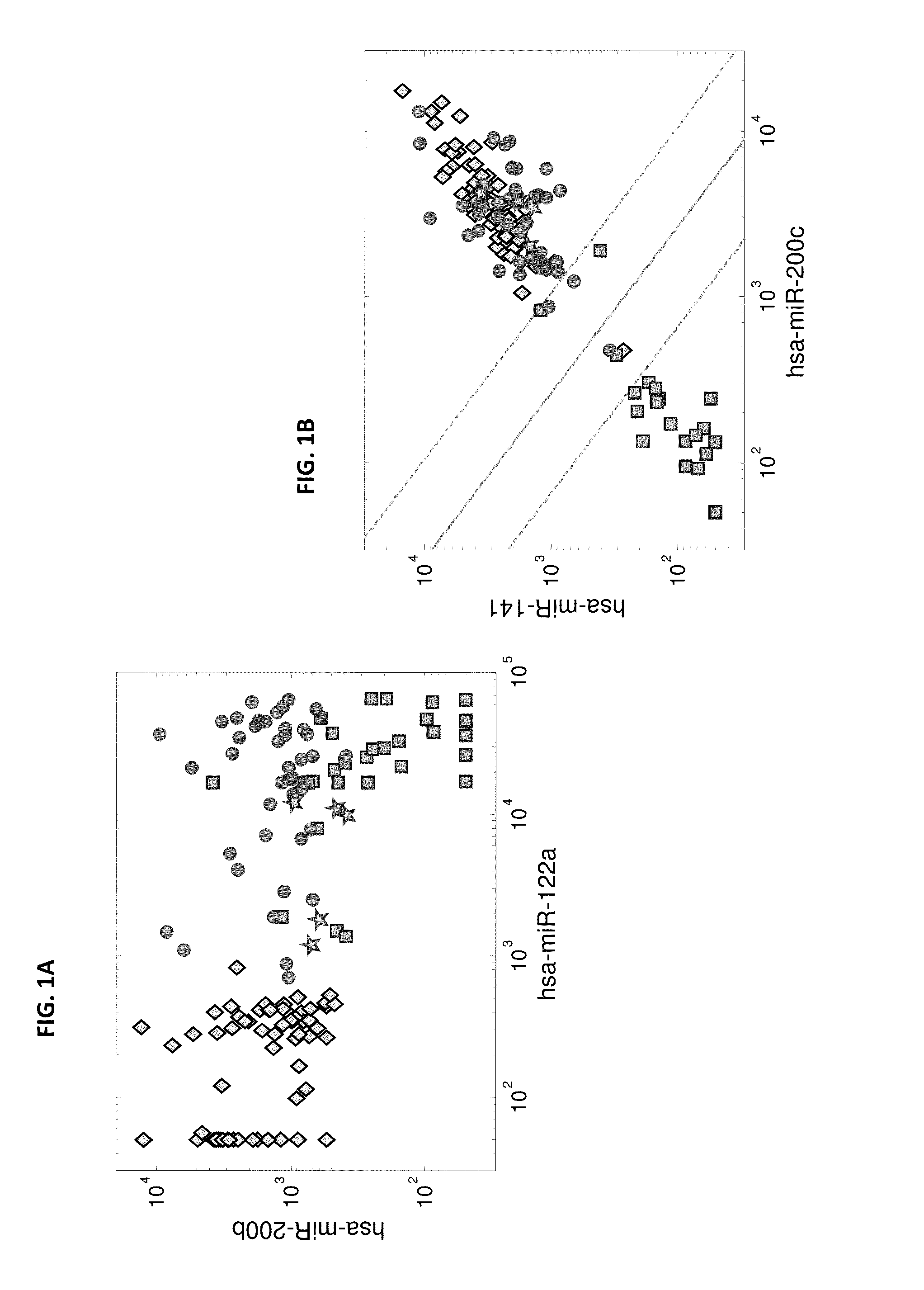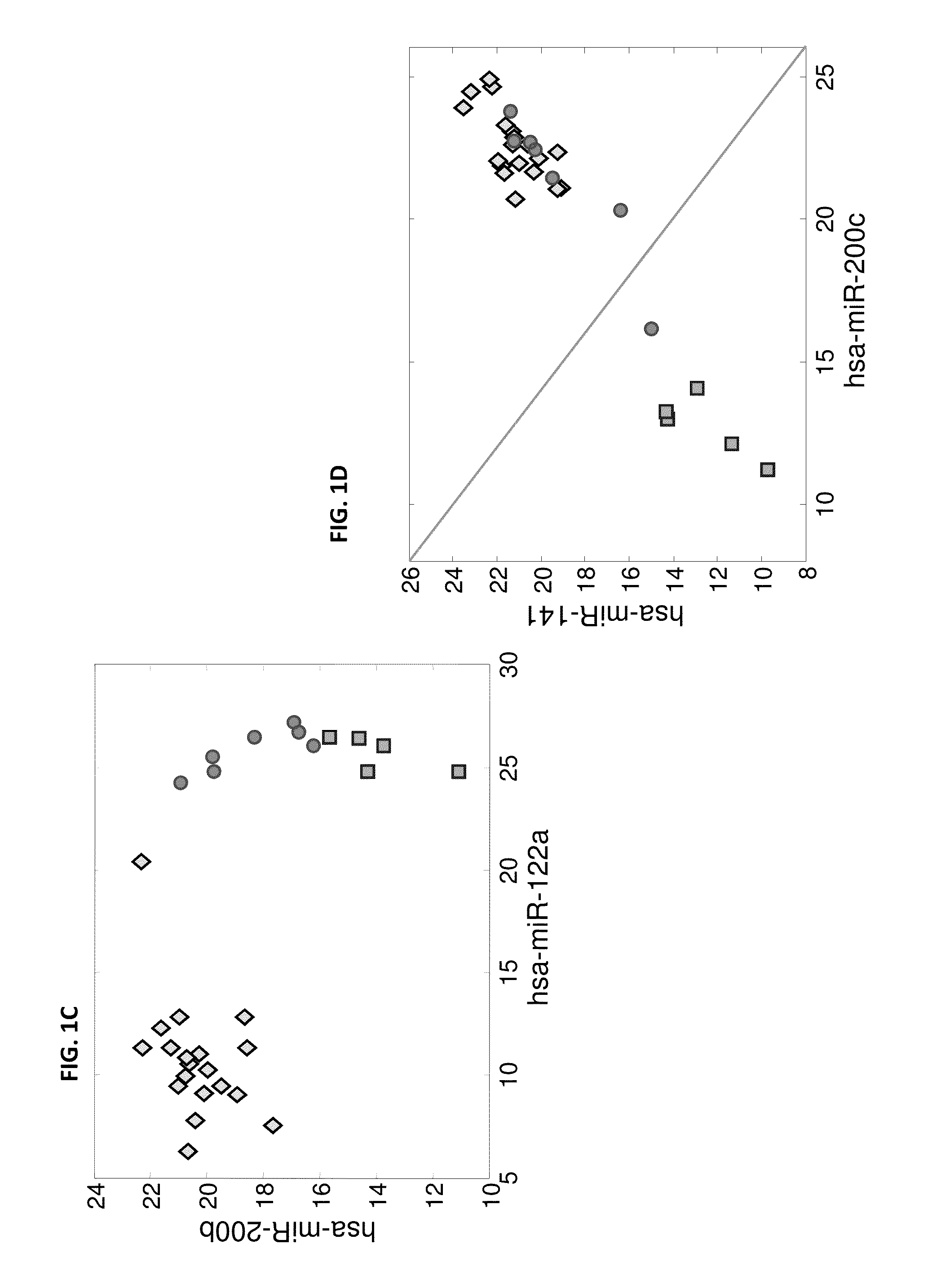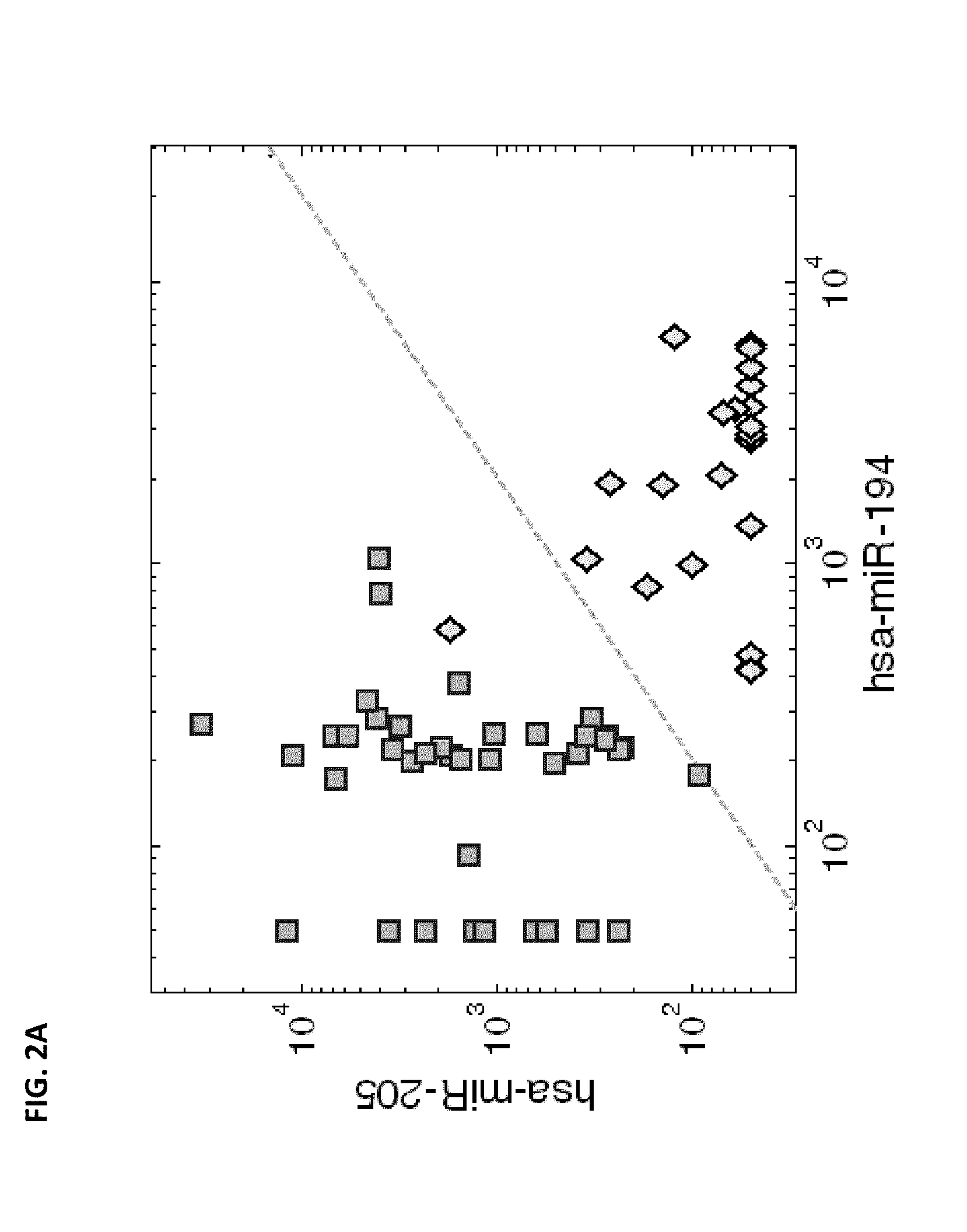Micrornas expression signature for determination of tumors origin
a micrornas and expression signature technology, applied in the field of methods for determining the origin of tumors and cancers, can solve the problems of difficult diagnosis of hepatic lesions that include primary liver tumors and metastatic tumors, and high variability in clinical approaches
- Summary
- Abstract
- Description
- Claims
- Application Information
AI Technical Summary
Problems solved by technology
Method used
Image
Examples
example 1
Specific microRNAs are Able to Distinguish Between Primary Non-Hepatic and Hepatic Tumors
[0208]microRNA expression levels were profiled in 144 tumor samples including 30 primary HCC samples, 63 primary tumors from epithelial origins, 46 liver metastases from epithelial origins, and 5 adenocarcinoma metastases to the liver from unknown origin. The primary HCC samples were compared to the other primary tumors and to the liver metastases samples. Hsa-miR-122a (SEQ ID NO: 32), which is a highly liver-specific microRNA, had the strongest effect when comparing primary HCC tumors to other primary tumors with a fold-change>90, and could identify HCC from other primary tumors (p-value=1.4e-38, AUC=1). However, this microRNA is also found at high levels in the RNA extracted from liver metastases (FIG. 1A), ostensibly due to contamination from the adjacent normal liver tissue, and is not a good marker for identifying liver metastases (fold-change of medians 1.1, p-value=0.28, AUC=0.56). By usi...
example 2
Specific microRNAs are Able to Distinguish Between Primary GI Tumors and Non-GI Primary Tumors
[0212]The microRNA expression can provide further information on the possible origin of liver metastases. Another pair of microRNAs, hsa-miR-194 (SEQ ID NO: 1) and hsa-miR-205 (SEQ ID NO: 4), had significant different expression (p-value<1e-12 for each) in primary tumors from gastrointestinal (GI) origin (14 colon, 5 pancreas, 5 stomach) compared to primary tumors of non-GI epithelial origin (24 lung, 15 breast). The ratio of these expression levels could be used to accurately identify primary tumors from non-GI origin: the decision rule “classify as non-GI primary when the expression of hsa-miR-205 is greater than half the expression of hsa-miR-194” (FIG. 2A; dashed line marks the decision boundary) had a sensitivity of 100% and specificity of 96% (AUC=0.9893). In the liver metastases, despite the small number of samples, this trend was maintained (FIG. 2B). However, since hsa-miR-194 is a...
example 3
Specific microRNAs are Able to Distinguish Between Primary Brain Tumors, Brain Metastases, Non-Brain Primary Tumors and Normal Brain Samples
[0213]microRNA expression levels were profiled on a microarray platform in 252 tumor samples including 15 brain primary tumor samples, 187 non-brain primary tumors, 50 brain metastases from various tissue origins and 2 normal brain samples. The brain primary tumor samples were compared to the other primary tumor samples, to normal brain samples and to samples of brain-located metastases (Table 6). Hsa-miR-124 (SEQ ID NO: 16), which is highly specific to the nervous system, displayed the greatest disparity in expression when comparing brain primary tumors to other primary tumors, with a fold-change of ˜100 (p-value=5.1e-57, AUC=0.9976, see Table 6). A combination of hsa-miR-124 and hsa-miR-219 (SEQ ID NO: 24) (B0, see methods) could be used to distinguish brain primary tumors from non-brain primary tumors with 100% accuracy (FIG. 4A). Other brain...
PUM
| Property | Measurement | Unit |
|---|---|---|
| sharp threshold | aaaaa | aaaaa |
| Tm | aaaaa | aaaaa |
| temperature | aaaaa | aaaaa |
Abstract
Description
Claims
Application Information
 Login to View More
Login to View More - R&D
- Intellectual Property
- Life Sciences
- Materials
- Tech Scout
- Unparalleled Data Quality
- Higher Quality Content
- 60% Fewer Hallucinations
Browse by: Latest US Patents, China's latest patents, Technical Efficacy Thesaurus, Application Domain, Technology Topic, Popular Technical Reports.
© 2025 PatSnap. All rights reserved.Legal|Privacy policy|Modern Slavery Act Transparency Statement|Sitemap|About US| Contact US: help@patsnap.com



